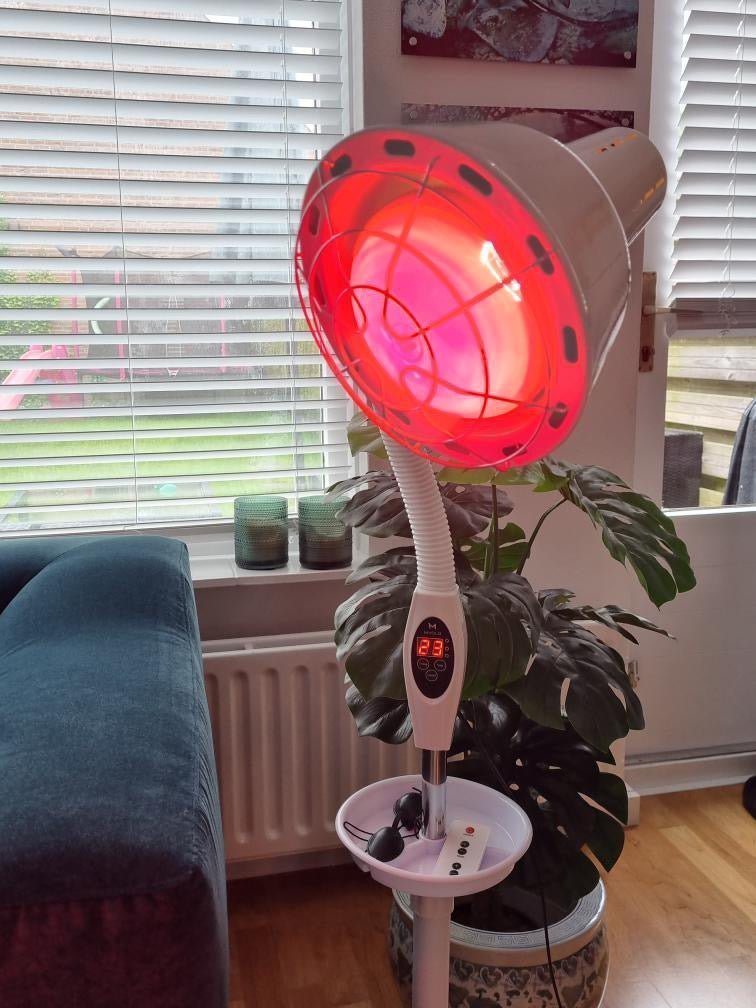Cortisol in Balance: The Role of Red Light in Stress and Health
Part
Stress is an inevitable part of modern life, and the way our bodies deal with stress can have a huge impact on our health. One of the key hormones in this stress response is cortisol. In this blog, we’ll take a closer look at what cortisol is, how it works, and why it’s so important to our wellbeing. We’ll also discuss what happens when your cortisol levels get out of balance, and how red light therapy can help regulate them. Want to learn more about how red light can help you with stress? Check out our previous blog post on stress and red light therapy .
What is Cortisol?
Cortisol is a steroid hormone produced by the adrenal cortex. This hormone plays a central role in your body’s response to stress, and is therefore known as the “stress hormone.” Cortisol helps regulate many vital processes, including metabolism, inflammation, and the immune system. Additionally, cortisol supports blood sugar levels and helps regulate blood pressure.
How Does Cortisol Work in Your Body?
Cortisol is regulated by the hypothalamic-pituitary-adrenal (HPA) axis, a complex system that kicks into action when your body experiences stress. When stress hits, the hypothalamus produces corticotropin-releasing hormone (CRH), which prompts the pituitary gland to release adrenocorticotropic hormone (ACTH). ACTH then stimulates the adrenal glands to produce and release cortisol into the bloodstream. This process allows your body to quickly respond to threats by freeing up energy and suppressing inflammation.
Why is Cortisol Crucial?
Cortisol is essential for maintaining homeostasis, the stable internal state of your body. It helps mobilize your energy during stressful situations, control inflammation, and support the immune system. Without adequate cortisol levels, your body would not be able to respond effectively to stress, which can lead to serious health problems.
The Dangers of Too Much or Too Little Cortisol
While cortisol is important, an imbalance can have serious consequences. Chronically elevated cortisol levels are linked to a range of health problems, including weight gain, high blood pressure, insomnia, type 2 diabetes, and a weakened immune system. Long-term stress, and therefore a constant elevation of cortisol, can also lead to cardiovascular disease and psychiatric conditions such as depression and anxiety.
On the other hand, low cortisol levels, such as in Addison's disease, can lead to symptoms such as fatigue, muscle weakness, and low blood pressure. This emphasizes the importance of maintaining healthy cortisol levels for your overall well-being.
Red Light Therapy: A Natural Way to Regulate Cortisol
Light therapy, and specifically red light therapy, is a promising method for naturally regulating cortisol levels. Red light therapy works by using specific wavelengths of light to stimulate the mitochondria in cells, resulting in improved cell energy production and reduced oxidative stress.
Scientific research has shown that exposure to red light can help lower cortisol levels, especially when the therapy is applied in the morning. This is crucial because light plays an important role in regulating the circadian rhythm, the body’s internal biological clock. A well-regulated circadian rhythm can help stabilize the HPA axis and thus better control cortisol production.
Other Colors of the Light Spectrum
While red light is the focus of this blog, it is important to also mention the effects of other colors of the light spectrum. Blue light, for example, is effective in improving alertness and concentration, but can disrupt the circadian rhythm in the evening, which can lead to sleep problems. Green and yellow light spectrums have mild effects on mood and can be used to improve mood without affecting sleep.
Conclusion: Choose Red Light Therapy for Healthy Cortisol Levels
Cortisol is a crucial hormone for maintaining a healthy, balanced lifestyle. However, an imbalance in cortisol can lead to serious health problems. Red light therapy offers a natural, scientifically proven method to regulate your cortisol levels and reduce stress. By incorporating red light therapy into your routine, you can not only improve your stress management, but also optimize your overall health.
Sources:
- Duurkoop, J. et al. (2021). “Biomarkers of Stress in Daily Life.” Current Opinion in Behavioral Sciences . ScienceDirect
- Levasseur, M. et al. (2020). “Light Exposure and Hormonal Changes: Implications for Health.” Stress . Dentalfonline
- Macchi, MM et al. (2010). “The Science of Circadian Rhythms.” Sleep Disorders . Wiley Online Library
- Kaida, K. et al. (2012). “Effects of Short-Wavelength Light on Sleep.” Sleep Medicine . Wiley Online Library
- Anderson, J. et al. (2019). “Cortisol and Stress Management.” Behavioral Science Journal . SAGE Journals
- Gubin, D. et al. (2016). “Circadian Rhythms and Hormonal Regulation.” Journal of Biological Rhythms . ScienceDirect






